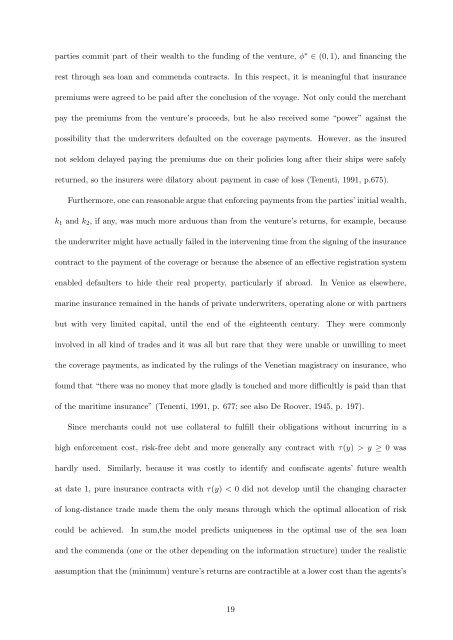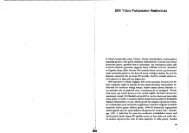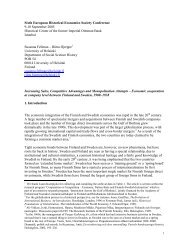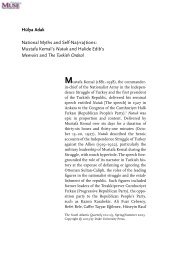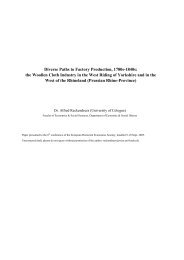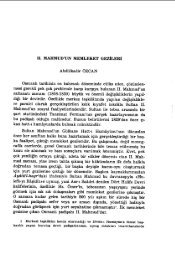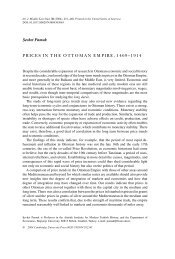The Birth of Insurance Contracts - The Ataturk Institute for Modern ...
The Birth of Insurance Contracts - The Ataturk Institute for Modern ...
The Birth of Insurance Contracts - The Ataturk Institute for Modern ...
You also want an ePaper? Increase the reach of your titles
YUMPU automatically turns print PDFs into web optimized ePapers that Google loves.
parties commit part <strong>of</strong> their wealth to the funding <strong>of</strong> the venture, φ ∗ ∈ (0, 1), and financing the<br />
rest through sea loan and commenda contracts. In this respect, it is meaningful that insurance<br />
premiums were agreed to be paid after the conclusion <strong>of</strong> the voyage. Not only could the merchant<br />
pay the premiums from the venture’s proceeds, but he also received some “power” against the<br />
possibility that the underwriters defaulted on the coverage payments. However, as the insured<br />
not seldom delayed paying the premiums due on their policies long after their ships were safely<br />
returned, so the insurers were dilatory about payment in case <strong>of</strong> loss (Tenenti, 1991, p.675).<br />
Furthermore, one can reasonable argue that en<strong>for</strong>cing payments from the parties’ initial wealth,<br />
k1 and k2, if any, was much more arduous than from the venture’s returns, <strong>for</strong> example, because<br />
the underwriter might have actually failed in the intervening time from the signing <strong>of</strong> the insurance<br />
contract to the payment <strong>of</strong> the coverage or because the absence <strong>of</strong> an effective registration system<br />
enabled defaulters to hide their real property, particularly if abroad. In Venice as elsewhere,<br />
marine insurance remained in the hands <strong>of</strong> private underwriters, operating alone or with partners<br />
but with very limited capital, until the end <strong>of</strong> the eighteenth century. <strong>The</strong>y were commonly<br />
involved in all kind <strong>of</strong> trades and it was all but rare that they were unable or unwilling to meet<br />
the coverage payments, as indicated by the rulings <strong>of</strong> the Venetian magistracy on insurance, who<br />
found that “there was no money that more gladly is touched and more difficultly is paid than that<br />
<strong>of</strong> the maritime insurance” (Tenenti, 1991, p. 677; see also De Roover, 1945, p. 197).<br />
Since merchants could not use collateral to fulfill their obligations without incurring in a<br />
high en<strong>for</strong>cement cost, risk-free debt and more generally any contract with τ(y) > y ≥ 0 was<br />
hardly used. Similarly, because it was costly to identify and confiscate agents’ future wealth<br />
at date 1, pure insurance contracts with τ(y) < 0 did not develop until the changing character<br />
<strong>of</strong> long-distance trade made them the only means through which the optimal allocation <strong>of</strong> risk<br />
could be achieved. In sum,the model predicts uniqueness in the optimal use <strong>of</strong> the sea loan<br />
and the commenda (one or the other depending on the in<strong>for</strong>mation structure) under the realistic<br />
assumption that the (minimum) venture’s returns are contractible at a lower cost than the agents’s<br />
19


